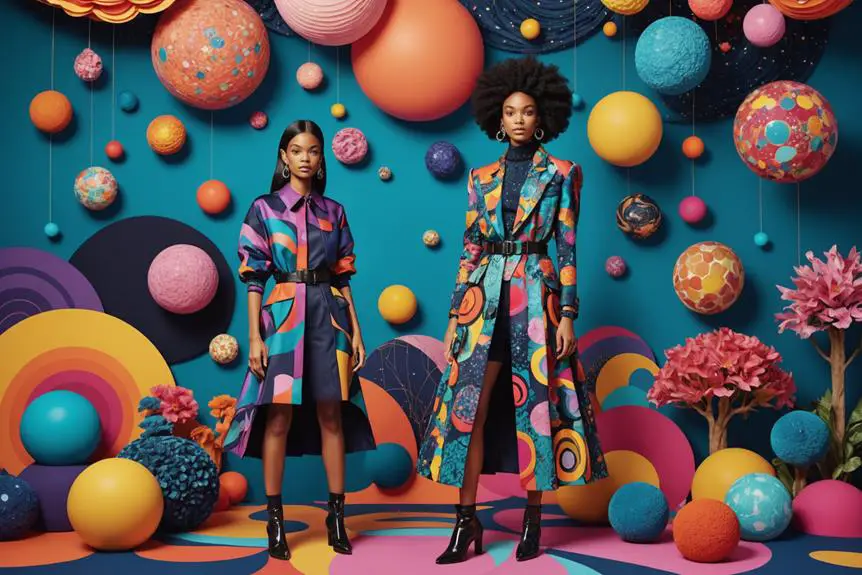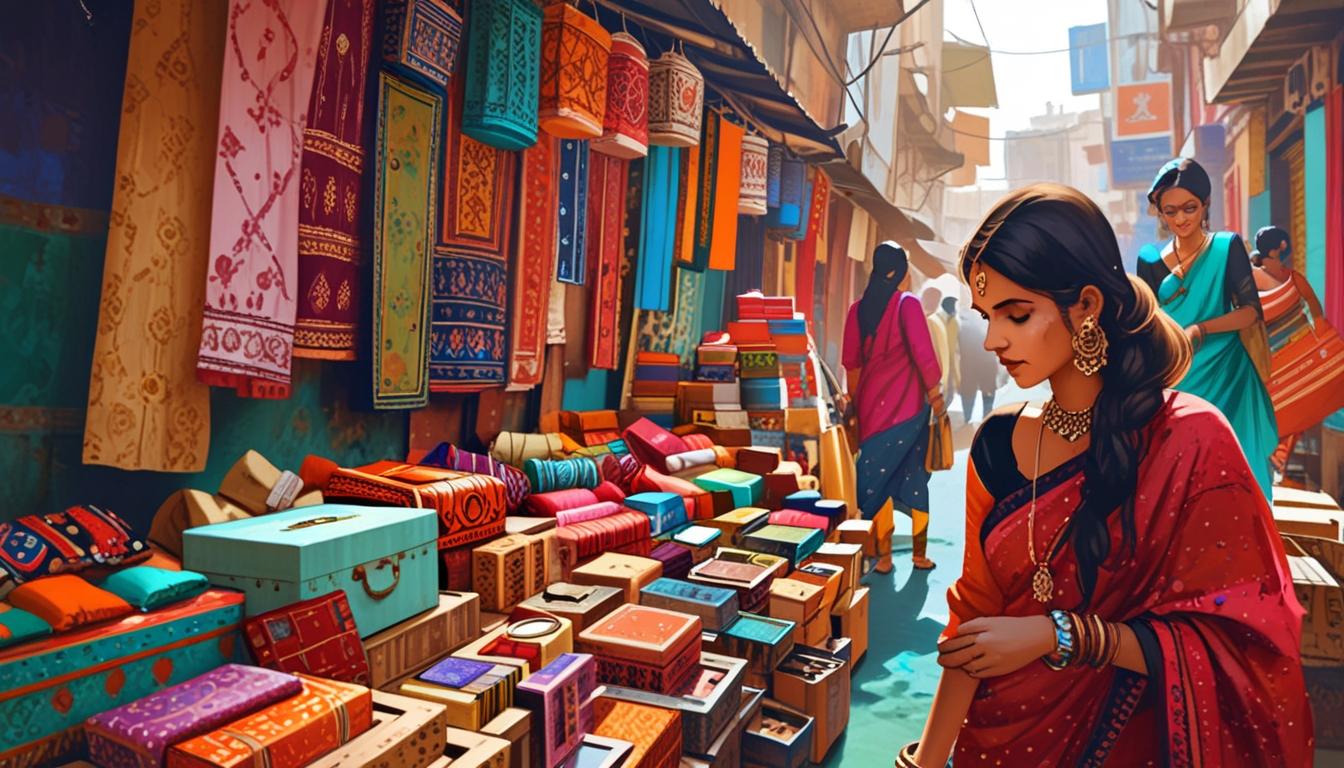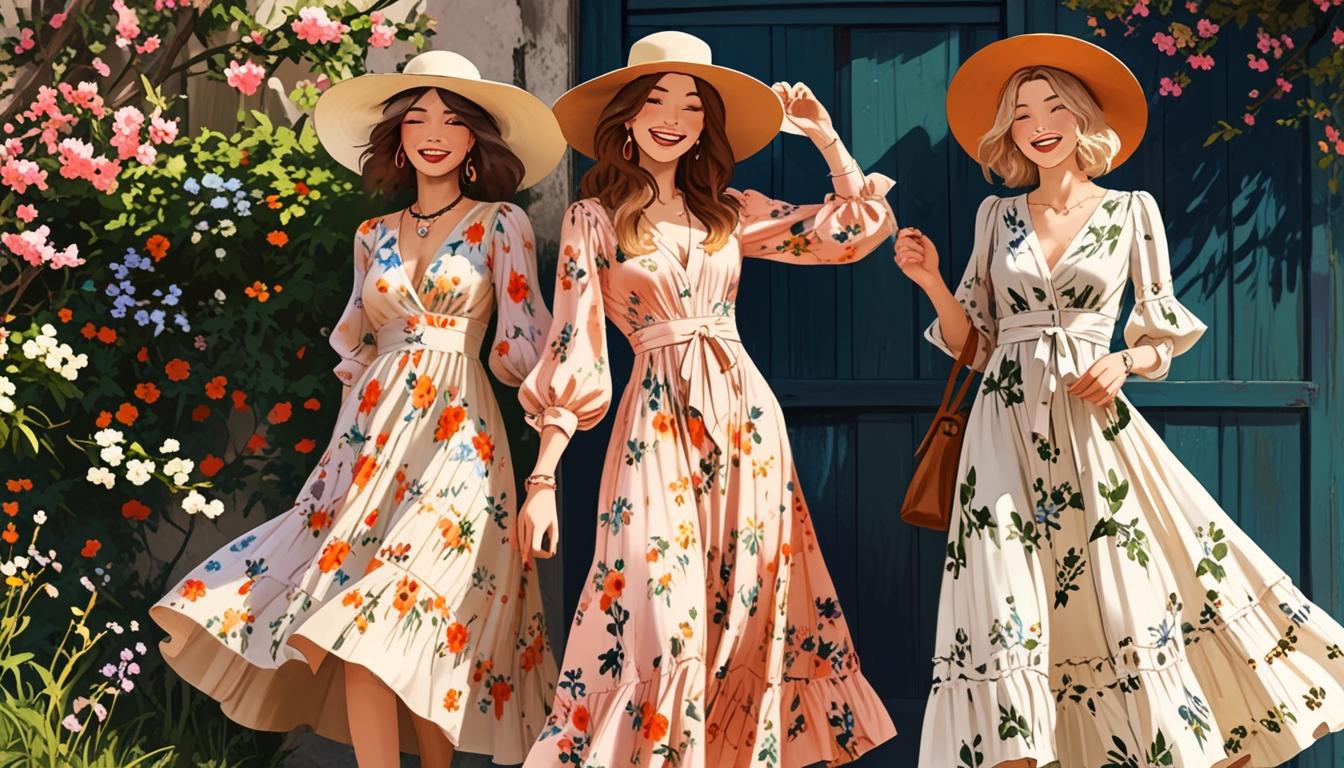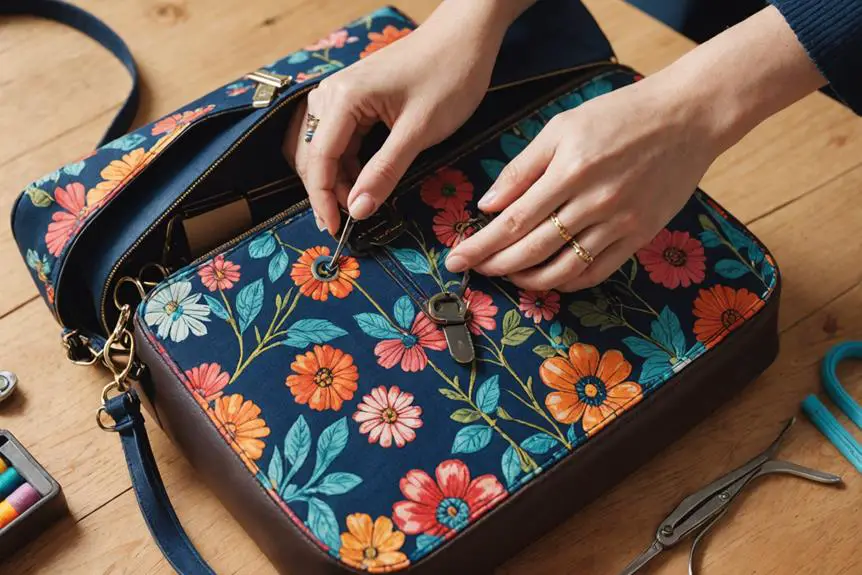You might find the outfits in *Everything Everywhere All at Once* more than just visually striking; they're a commentary on identity and cultural expression. Jobu Tupaki's wardrobe, designed by Shirley Kurata, merges high fashion with streetwear, reflecting her chaotic journey through the multiverse. Each outfit not only tells a story but also challenges conventional stereotypes. As you consider the significance of these choices, you might wonder how they resonate with broader fashion trends and cultural narratives in today's society. What does Jobu's eclectic style ultimately reveal about her character and our own identities?
Overview of Jobu Tupaki
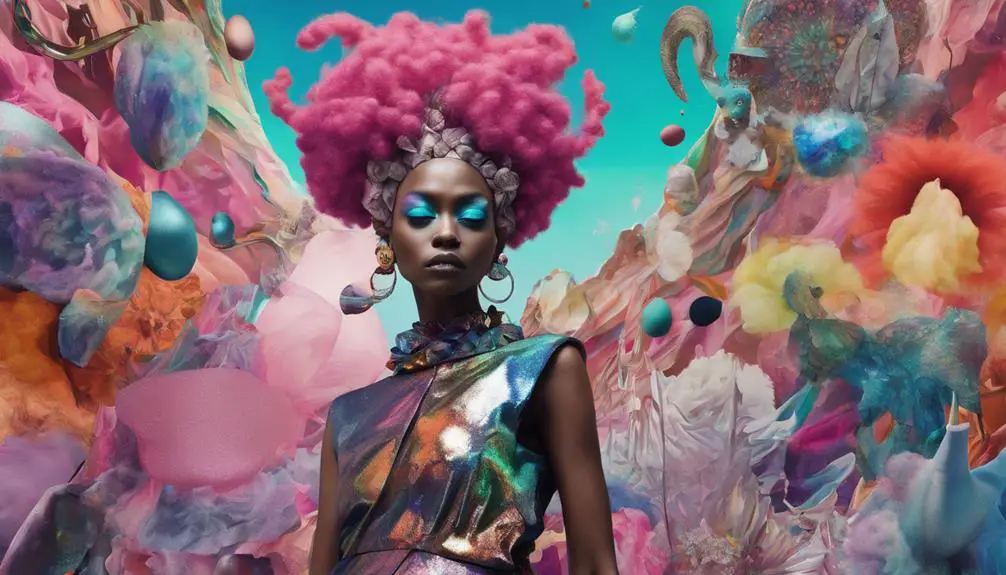
In *Everything Everywhere All At Once*, Jobu Tupaki, played by Stephanie Hsu, emerges as a complex antagonist who embodies chaos across the multiverse. Her character is a vibrant representation of rebellion, and her costumes, designed by Shirley Kurata, play an essential role in illustrating her tumultuous journey. Jobu's eclectic fashion choices reflect both her struggle for identity and her challenging relationship with her mother, Evelyn. Each of her looks is a striking blend of influences, from K-pop and anime to Victorian Gothic, showcasing a multidimensional aesthetic that subverts traditional Asian-centric stereotypes.
As you explore Jobu's costumes, you can't help but notice how they enhance the film's surreal narrative while provoking important discussions about cultural representation. The emotional weight of her character is palpable in her final costume, which ingeniously combines elements from her various looks throughout the film, symbolizing the chaos she embodies as she navigates multiple realities. This fashion statement isn't just about style; it represents the generational conflicts within immigrant families and the quest for acceptance.
Ultimately, Jobu Tupaki's character and her fashion choices elevate the film, allowing viewers to engage with themes of identity and chaos in a visually stunning manner. Her journey through the multiverse serves as an exciting exploration of self-discovery and cultural nuances, making her a compelling force in the narrative and a standout in modern cinema.
Fashion Aesthetic Exploration
The fashion aesthetic in *Everything Everywhere All At Once* captivates with its bold blend of high fashion and streetwear, perfectly mirroring the film's multiverse theme. You'll notice that Jobu Tupaki's outfits are particularly striking, showcasing a vibrant mix of cultural influences that celebrate diversity and individuality. The costumes cleverly challenge stereotypes associated with Asian identity, using eclectic layering techniques that create a chaotic yet mesmerizing visual experience.
Throughout the film, oversized silhouettes dominate the wardrobe, allowing characters to express their multifaceted identities. These costumes often incorporate unique accessories, like visors and statement jewelry, which enhance both character depth and narrative complexity. You can see how the vibrant aesthetic reflects the emotional turmoil faced by the characters as they navigate their chaotic realities.
Jobu's final look, a patchwork of previous costumes, serves as a brilliant symbol of her complex identity. This ensemble encapsulates the chaotic nature of moving through multiple realities in the multiverse, blending avant-garde elements with traditional garments. The result is a stunning visual representation of the characters' struggles and triumphs, making the fashion aesthetic not just a backdrop but an integral part of the story.
In exploring this fashion aesthetic, you'll find that it not only enhances the film's themes but also invites viewers to reflect on their own identities. So, as you immerse yourself in this world of vibrant costumes and cultural richness, embrace the chaos and celebrate the beauty of diversity.
Signature Outfits Breakdown
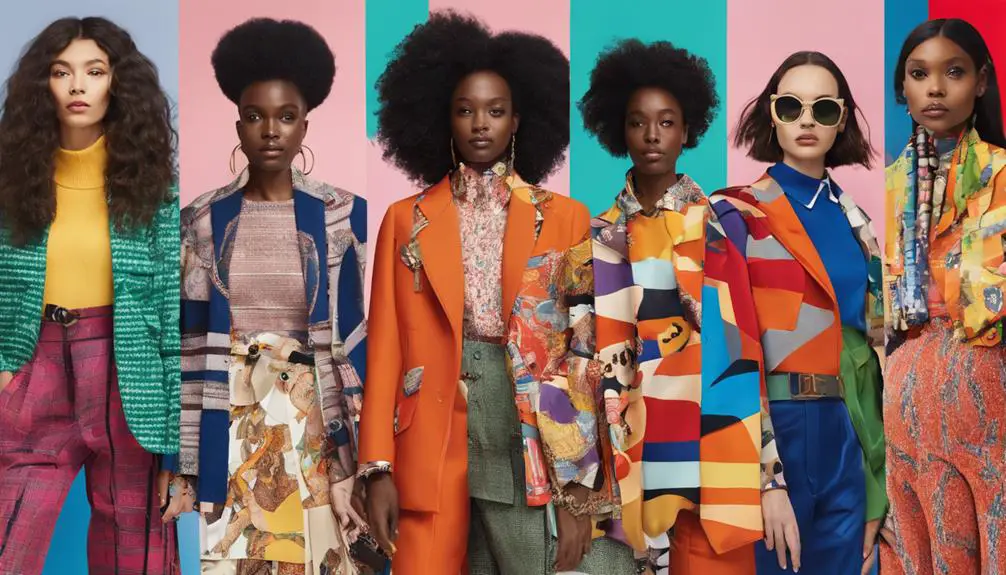
Five signature outfits define Jobu Tupaki's character in *Everything Everywhere All at Once*, each telling a unique story about her identity and struggles. First, her plaid ensemble, complete with a visor and mask, represents societal expectations of the perfect daughter. This look showcases the pressure Jobu feels to conform, while hinting at her underlying rebellion. Next, the Elvis-inspired jumpsuit boldly symbolizes her defiance against her mother's ideals, displaying her desire to break free from traditional constraints.
Then there's Golfer Jobu, featuring an argyle vest and mini skirt. This outfit critiques the stereotype of the ideal Asian daughter, revealing Jobu's multifaceted identity. Each look peels back the layers of her character, shining a light on her internal conflicts. Goth Jobu arrives with an all-black ensemble, drawing inspiration from anime and Victorian Gothic fashion. This outfit mirrors her emotional turmoil and longing for acceptance, resonating with anyone who's ever felt out of place.
Key Accessories Highlight
Throughout *Everything Everywhere All at Once*, Jobu Tupaki's key accessories not only enhance her outfits but also reflect her complex identity. Her bold choices, such as statement jewelry, play a vital role in creating her vibrant looks. You'll often spot oversized earrings that dangle dramatically, along with layered necklaces that add depth to her ensembles. These accessories don't just catch the eye; they symbolize her multifaceted character and emotional turmoil.
Jobu's unique handbags showcase her eclectic style, with unconventional shapes that mirror her chaotic personality. Each piece seems to tell a story, contributing to her overall rebellious aesthetic. Eye-catching footwear, particularly platform shoes and chunky heels, amplifies her daring fashion statements, ensuring she stands out in any scene.
Hats also play a significant role in her wardrobe, adding flair while highlighting her diverse cultural influences. From wide-brimmed styles to quirky visors, these accessories cleverly juxtapose traditional Asian matriarch fashion with Jobu's contemporary vibe. The visors, in particular, nod to heritage while reinforcing her bold and fearless approach to fashion.
In combining these elements, Jobu Tupaki's accessories encapsulate her journey through a kaleidoscope of realities, making her a memorable and impactful character. Whether it's the striking jewelry, unconventional handbags, or eye-catching footwear, each accessory enhances her narrative, allowing you to appreciate the depth of her character while celebrating her unique, rebellious style.
Hair and Makeup Styles
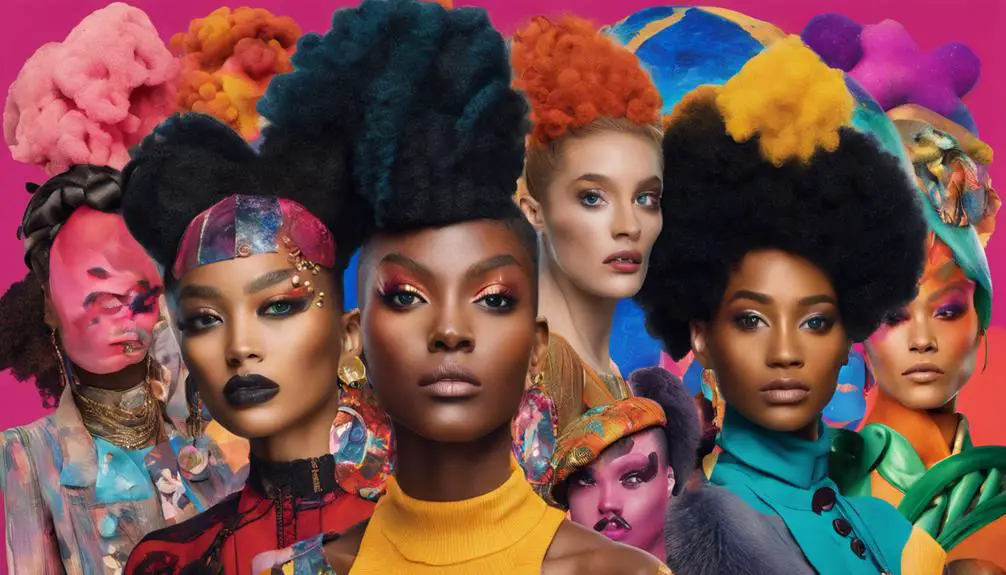
Embracing boldness and creativity, Jobu Tupaki's hair and makeup styles play an essential role in expressing her chaotic personality and multiverse identity. From the very start, you'll notice her hair features vibrant hues and asymmetrical cuts, perfectly mirroring her eclectic fashion choices. These bold colors are not just for show; they reflect the emotional states and character alterations she undergoes throughout the film.
Jobu's dramatic eye makeup steals the spotlight, with vibrant colors and graphic elements that enhance the surreal aesthetic of her character. The use of glitter and metallics adds a futuristic flair, making her look even more striking and memorable. Each makeup choice serves as a visual metaphor, emphasizing her journey of self-exploration and rebellion against conformity.
But it doesn't stop there! Unique nail art complements her outfits, shifting through various colors and designs that often match her hair and makeup. This attention to detail highlights the thoughtfulness behind Jobu's aesthetic, showcasing the creativity that fuels her multiverse identity.
Cultural Influences in Costumes
In exploring Jobu Tupaki's costumes, you'll find a rich tapestry of cultural influences that vividly reflect her multifaceted identity. From K-Pop street style to Victorian Gothic elements, each outfit showcases a blend of traditional and contemporary aesthetics. This eclectic mix of fashion styles allows for a fresh take on cultural representation, breaking away from stereotypes and embracing authenticity.
Shirley Kurata's costume design plays a pivotal role in this representation. By sourcing clothing pieces from Chinatown, she reinforces the film's commitment to genuine cultural influences. For instance, the use of accessories, like visors, pays homage to traditional Asian matriarchs while simultaneously subverting the stereotypes often associated with Asian femininity. Jobu's golfer outfit critiques the societal pressures placed on the so-called perfect Asian daughter, highlighting the expectations that individuals grapple with within their cultures.
The diverse fashion styles embodied in characters like Goth Jobu and K-Pop Jobu celebrate personal expression in a vibrant way. Goth Jobu's Lolita-inspired look contrasts sharply with K-Pop Jobu's neon ensemble, showcasing how fashion can serve as a tool for both self-identity and cultural commentary. Each choice reflects not just a character's aesthetic but also the broader narrative of the film, inviting viewers to appreciate the depth and variety of influences that shape Jobu Tupaki's character. Ultimately, these costumes aren't just about style; they're a powerful statement about representation, authenticity, and the beauty of embracing one's identity.
Impact on Fashion Trends
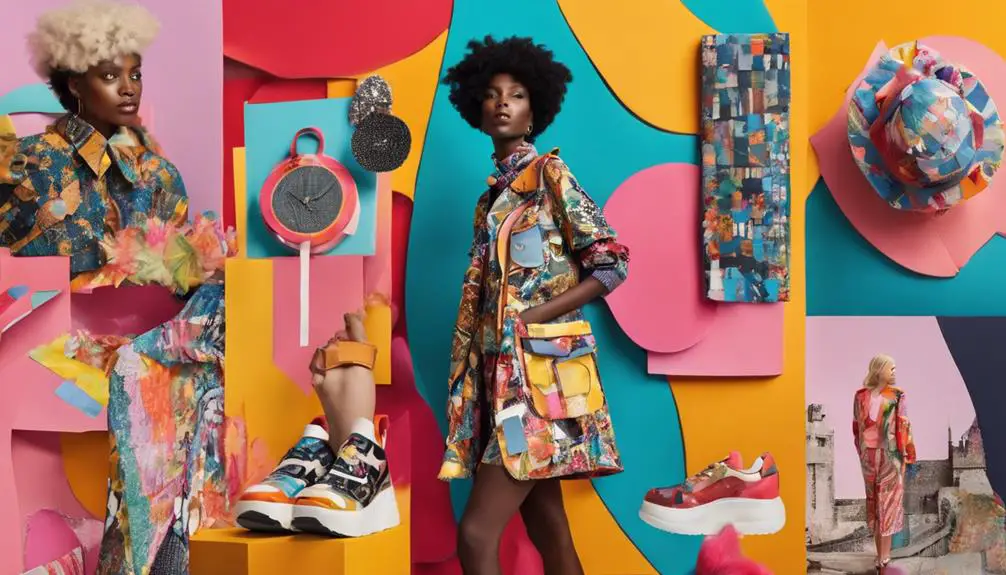
Jobu Tupaki's vibrant costumes have undeniably reshaped fashion trends, making a bold statement about self-expression. Her eclectic costumes, rich in cultural fusion and vibrant colors, challenge conventional aesthetics and encourage you to embrace creativity in your own wardrobe. The film's influence extends beyond the screen, inspiring a resurgence of layering techniques that celebrate individuality and boldness. You might notice oversized silhouettes becoming a staple in streetwear, as more people adopt these daring styles. This is reminiscent of the cultural impact seen in vintage Ralph Lauren pieces, which often incorporate bold and unique elements that stand out.
The acceptance of unconventional fashion has surged, thanks to Jobu's daring ensembles, which highlight the beauty of diversity. As a result, vibrant colors that once felt too loud are now celebrated and integrated into everyday looks. This shift not only promotes self-expression but also empowers you to experiment with your style, blending influences from different cultures and inspirations.
Moreover, the film's success has sparked a wave of merchandise inspired by Jobu's outfits, further solidifying her impact on pop culture. From clothing lines to accessories, the fashion world is buzzing with collaborations that reflect her avant-garde aesthetic. These trends signal a significant movement towards embracing individuality, allowing future designers to explore similar themes in their collections.
Ultimately, Jobu Tupaki's costumes have redefined what it means to express oneself through fashion. By embracing eclectic styles and vibrant colors, you're not only making a fashion statement but also participating in a cultural dialogue that champions boldness and creativity.
Frequently Asked Questions
Who Did the Costumes for Everything Everywhere All at Once?
Shirley Kurata did the costume design, blending cultural influences with multiverse themes. Your wardrobe choices reflect character evolution through vibrant color palettes and stylistic contrasts, creating powerful fashion statements that enhance visual storytelling and character symbolism.
Why Does Evelyn's Sweater Say Punk?
Evelyn's sweater, like a rebel yell, boldly proclaims "punk," symbolizing her fashion's cultural influence and emotional connection. This choice reflects her character development, style evolution, and multiverse representation through powerful visual storytelling and punk aesthetics.
Was Jackie Chan Supposed to Be in Everything Everywhere All at Once?
Jackie Chan's involvement was initially considered during film production, but casting decisions shifted to highlight cultural significance. Alternate choices emphasized character development and martial arts influence, aligning with the directors' vision, prompting mixed fan reactions.
What Is the Point of the Movie Everything Everywhere All at Once?
The movie tackles multiverse theory and existential questions, exploring family dynamics and personal identity. It blends absurdist humor with philosophical themes, highlighting generational conflict and cultural representation while showcasing emotional resilience and cinematic innovation.
